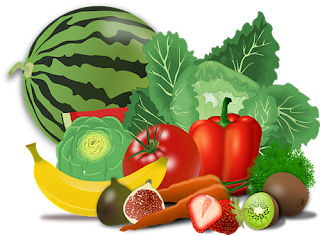
During the month of October, I will be participating in the Write 31 Days hosted by Crystal Stine. My category is Food, Health & Wellness and my theme is "Into The Kitchen".
A little pizza history
Pizza is one of the most popular foods in the U.S., but where did it originate? It could have been as the flatbread of ancient times in the Middle East. It could have come from the Greeks and Romans, who baked flatbread topped with olive oil and seasonings now known as Focaccia.
However, most historians agree that pizza as we know it today did, indeed, originate in Italy. In Naples to be exact. A baker named Raffaele Esposito was asked to make a pizza for the Italian King Umberto I and Queen Margherita in 1889. His creation, made with mozzarella, fresh tomatoes and basil, is still made today and known as Pizza Margherita .
Pizza migrated to the U.S. by way of Spain, England and France but did not become popular until after World War II. Our Americanized version of pizza has made it's way back to Italy and is popular there as well.
Making a Great Pizza Dough
Many chefs and home cooks will argue that the secret is in the flour, so let's explore some different types of flour you might use. All purpose flour is a blend of hard and soft wheat and is so named because it is suitable for most baking needs. Bread flour, on the other hand, is high in gluten and therefore excellent for bread and pizza dough. And lastly, there is an Italian 00 flour, which is lower in protein and highly praised for making great pizza crust. However, availability and price may preclude this for many of us. I just use a good-quality bread flour, and here in my kitchen that is good enough.
 |
| Ready for the oven. |
While I love a good crust, the adornments are pretty important, too. After experimenting with different commercially-prepared sauces, and one homemade sauce, I settled on a canned sauce from Dei Fratelli which we really like. Since I divide and freeze the remaining sauce, I can get four pizzas from one can. Having just admitted to using canned sauce, I don't grow my own onions or peppers or make my own cheese either. Does that make my pizza any less homemade? I don't think so. 🍕
My favorite cheese is Sargento's Off the Block mozzarella, but I'll use whatever I have a coupon for and/or is on sale. Some of our favorite toppings include pepperoni, Italian sausage, onions, green pepper, and green olives.
Bubble Crust or Not?
I have already posted my recipe, but there are a few things I omitted since they are not critical to a good pizza. I happen to dislike the large bubbles that often form in the crust. To avoid this, after I roll out the dough (yes, I use my rolling pin), and take a fork and dock the dough all over, in other words, I poke holes in it. This gives me a flat pizza, but if you don't mind the occasional bubble in your crust, just ignore this step.
 |
| Wood-fired pizza oven. |
Another thing I do that I learned from Alton Brown, is to oil the edge of the dough with olive oil before baking. Does it make a lot of difference in the overall scheme of things? Probably not, but the crust is a nice golden brown.
Baking Your Pie
Not everyone has a wood-fired pizza oven (I don't, but I know someone who does). If you don't, then turn your oven to it's highest setting. Mine goes to about 550°-600° F. I use a pizza stone which I always keep in the oven on the bottom rack. Preheat for at least 30 minutes for the best results. My pizza cooks in 8 minutes.
Final Tip
If you are using a pizza stone and peel, roll out your pizza on parchment paper. It makes the transfer to the stone much easier. The pizza and the parchment paper go onto the stone. Our process is when the pizza is done, hubby takes it out stone and all. He then slides the pizza with the parchment onto a wooden cutting board where it slices it, after which he slides it back onto the hot stone. This way the pizza stays hot down to the last delicious slice.
 |
| Hot out of the oven. |
What's your pizza? Delivery, take-out or make your own?
If you enjoyed this post, please leave a comment. I would love to hear your thoughts.







